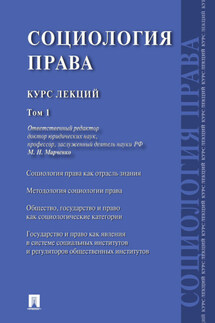Социологический ежегодник 2015-2016 - страница 15
Cattell R.B. Concepts and methods in the measurement of group syntality // Psychological rev. – Wash., 1948. – Vol. 55, N 1. – P. 48–63.
Chan J., To H.P., Chan E. Reconsidering social cohesion: Developing a definition and analytical framework for empirical research // Social indicators research. – Dordrecht, 2006. – Vol. 75, N. 2. – P. 273–302.
Dickes P., Valentova M. Construction, validation and application of the measurement of social cohesion in 47 European countries and regions // Social indicator research. – Dordrecht, 2013. – Vol. 113, N 3. – P. 827–846.
Drescher S., Burlingame G., Fuhriman A. Cohesion: An odyssey in empirical understanding // Small group research. – Newbury Park (CA), 2012. – Vol. 43, N 6. – P. 662–689.
Festinger L., Schaсhter S, Back K. Social pressures in informal groups: A study of human factor in housing. – Stanford (CA): Stanford univ. press, 1950. – X, 197 p.
Hulse K., Stone W. Social cohesion, social capital and social exclusion: A cross-cultural comparison // Policy studies. – L., 2007. – Vol. 28, N 2. – P. 109–128.
Jenson J. Defining and measuring social cohesion. – L.: Commonwealth secretariat, 2010. – IX, 34 p.
Lewin K. A dynamic theory of personality. – N.Y.; L.: McGraw-Hill, 1935. – IX, 286 p.
Lockwood D. Civic integration and social cohesion // Capitalism and social cohesion: Essays on inclusion and integration / Ed. by I. Gough, G. Olofsson. – N.Y.: St. Martin’s press, 1999. – P. 63–84.
Measuring team cohesion: Observations from the science / Salas E., Grossman R., Hughes A.M., Coultas C.W. // Human factors. – N.Y., 2015. – Vol. 57, N 3. – P. 365–374.
Member diversity and cohesion and performance in walking groups / Shapcott K.M., Carron A.V., Burke S.M., Bradshaw M.H, Estabrooks P.A. // Small group research. – Newbury Park (CA), 2006. – Vol. 37, N 6. – P. 701–720.
Moreno J.L. Who shall survive? – N.Y.: Nervous and mental disease publishing co., 1934. – XVI, 440 p.
Mudrack P.E. Defining group cohesiveness: A legacy of confusion // Small group behaviour. – L., 1989. – Vol. 20, N 1. – P. 37–49.
Putnam R.D. The prosperous community: Social capital and public life // American prospect. – Princeton (NJ), 1993. – Vol. 13, N 4. – P. 35–42.
Rajulton F., Ravanera Z.R., Beaujot R. Measuring social cohesion: An experiment using the Canadian national survey of giving, volunteering and participating // Social indicators research. – Dordrecht, 2007. – Vol. 80, N 3. – P. 461–492.
Shelly R.K., Bassin E. Cohesion, solidarity and interaction // Sociological focus. – Columbus (OH), 1989. – Vol. 22, N 2. – P. 143–150.
Shils E.A., Janowitz M. Cohesion and disintegration in the Wehrmacht in World War II // Public opinion quart. – Oxford, 1948. – Vol. 12, N 2. – P. 280–315.
Siebold G.L. The evolution of the measurement of cohesion // Military psychology. – Hillsdale (NJ), 1999. – Vol. 11, N 1. – P. 5–26.
Van Bergen A., Koekebakker J. Group cohesiveness in laboratory experiments // Acta psychologica. – Amsterdam, 1959. – Vol. 16. – P. 81–98.
Vergolini L. Social cohesion in Europe: How do the different dimensions of inequality affect social cohesion? // International j. of comparative sociology. – L., 2002. – Vol. 52, N 3. – P. 197–214.
Weber M. Economy and society. – Berkeley: Univ. of California press, 1978. – Vol. 1, 2. – XXXII, 1469 p.
Zander A.









